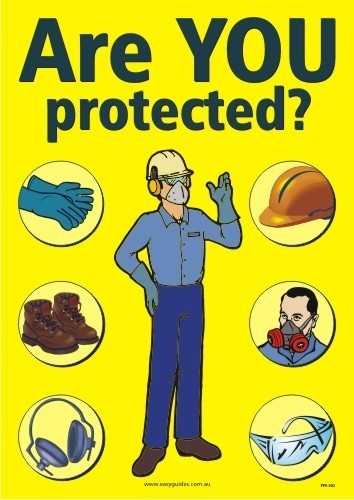Proper Use Of Personal Protective Equipment

Using personal protective equipment (PPE) helps to prevent the transmission of communicable diseases between patients and health care providers. Using PPE can also help to prevent the contamination of exposed wounds or sores from germs or bacteria that can travel from a health care provider to the patient. Knowing how to properly use PPE can help to insure the safety and well-being of health care providers and emergency responders.
Timing
Donning personal protective equipment is important before approaching a patient or an individual in an emergency rescue situation. First, the patient must be assessed visually for evidence of injury or other issues. If you are unsure whether they are bleeding, then you must wear protective gloves in order to prevent being exposed to blood-borne pathogens and diseases. It is always better to assume you are at risk of exposure, rather than finding out later that you should have worn gloves.
Disposal
Once patient care is completed, then your PPE needs to be discarded in a biohazard trash bag. If a biohazard bag is not available, then make sure that whichever bag the PPE is thrown away in is labeled with a marker. Be sure that any biohazard bags are not left in a place where they might have the potential to rip or tear.
Warning
PPE should never be reused. Even if a patient or client does not physically touch a glove, mask, gown or protective eyewear, you must throw away all personal protective equipment. This eliminates any questionable circumstances over whether or not your personal protective equipment was actually exposed to any body fluids or germs from the patient or client. If you are treating more than one client or patient at a time, be sure to change personal protective equipment, especially gloves, between patients.
Training
If you work for a health care service provider, then you will be required to undergo training for using and disposing of personal protective equipment. Some professionals, such as doctors and nurses, may use personal protective equipment daily, while others, such as social workers, may only use it occasionally or rarely. However, it is important to protect the employees of health care organizations by providing adequate training. The proper use of personal protective equipment is also covered in first responder training, CPR and first aid training.
Types
There are many different types of personal protective equipment in the medical field. Eye and face protection can include safety glasses, face shields, or goggles which can be used to protect against liquids or flying particles such as vomit, gushing blood, or spittle. Hand protection can include disposable latex exam gloves. Other examples of protective equipment can include CPR face shields, some of which come with specialized single-use breather valves.
Timing
Donning personal protective equipment is important before approaching a patient or an individual in an emergency rescue situation. First, the patient must be assessed visually for evidence of injury or other issues. If you are unsure whether they are bleeding, then you must wear protective gloves in order to prevent being exposed to blood-borne pathogens and diseases. It is always better to assume you are at risk of exposure, rather than finding out later that you should have worn gloves.
Disposal
Once patient care is completed, then your PPE needs to be discarded in a biohazard trash bag. If a biohazard bag is not available, then make sure that whichever bag the PPE is thrown away in is labeled with a marker. Be sure that any biohazard bags are not left in a place where they might have the potential to rip or tear.
Warning
PPE should never be reused. Even if a patient or client does not physically touch a glove, mask, gown or protective eyewear, you must throw away all personal protective equipment. This eliminates any questionable circumstances over whether or not your personal protective equipment was actually exposed to any body fluids or germs from the patient or client. If you are treating more than one client or patient at a time, be sure to change personal protective equipment, especially gloves, between patients.
Training
If you work for a health care service provider, then you will be required to undergo training for using and disposing of personal protective equipment. Some professionals, such as doctors and nurses, may use personal protective equipment daily, while others, such as social workers, may only use it occasionally or rarely. However, it is important to protect the employees of health care organizations by providing adequate training. The proper use of personal protective equipment is also covered in first responder training, CPR and first aid training.
Types
There are many different types of personal protective equipment in the medical field. Eye and face protection can include safety glasses, face shields, or goggles which can be used to protect against liquids or flying particles such as vomit, gushing blood, or spittle. Hand protection can include disposable latex exam gloves. Other examples of protective equipment can include CPR face shields, some of which come with specialized single-use breather valves.
- to7188e21b238ca1f36963bfda7a0e980e.jpg
References
http://www.ehow.com/about_6382953_proper-use-personal-protective-equipment.html
http://www.unisza.edu.my/jkkp/images/PPE.jpg